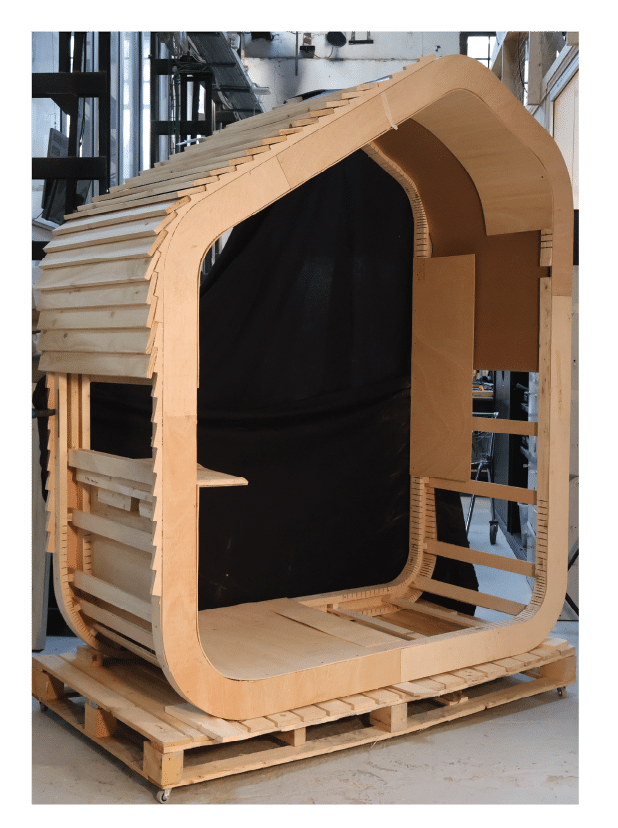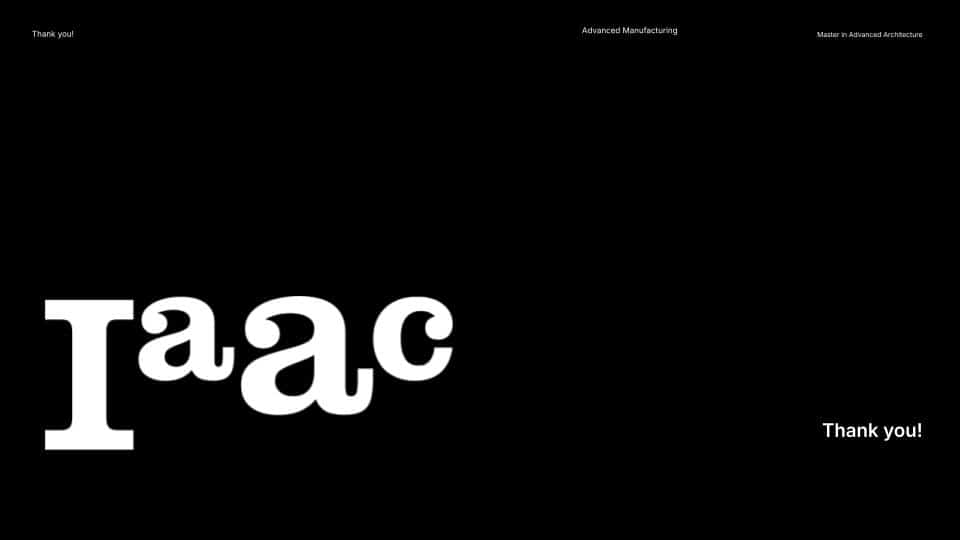MODULAR PODS
VERTICAL EXTENSIONS
To address urgent urban housing needs, this thesis explores modular rooftop pods using Digital Twins, CNC fabrication, kerfing, and timber joinery—enabling precise, low-waste, minimum tool required for assembling and sustainable expansion of aging urban buildings through scalable and prefabricated Modular systems
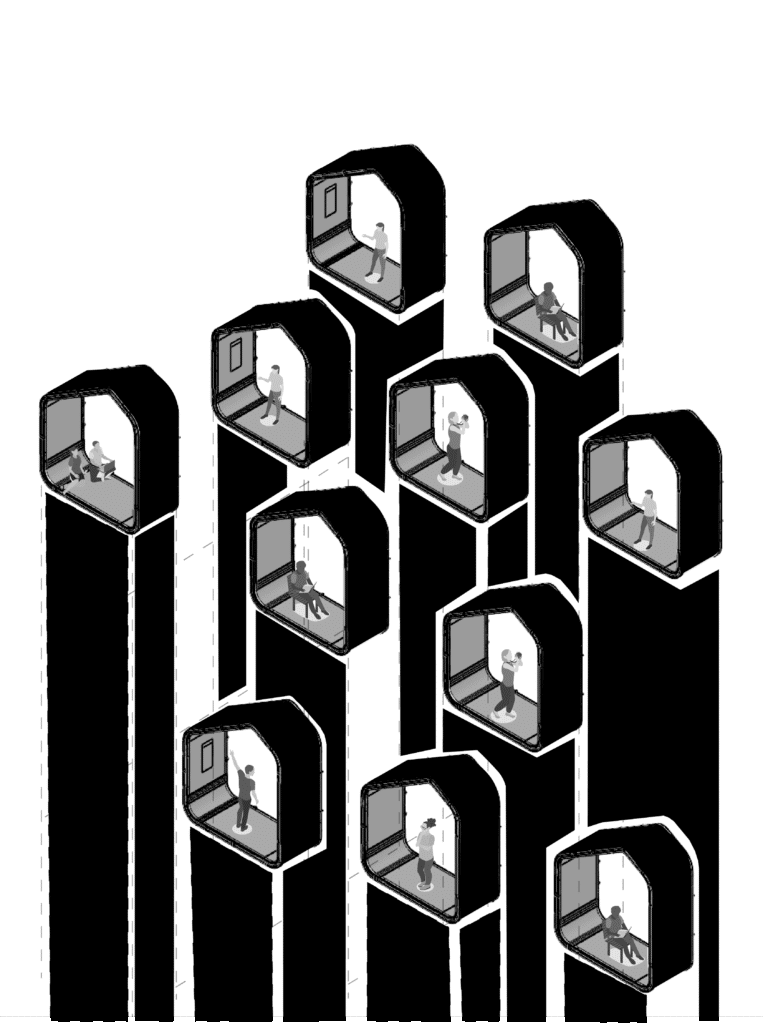
Why Vertical extension required ?
What’s the purpose of the Modular pods?
Introduction
This project proposes modular, prefabricated rooftop pods enabled by digital twin analysis, CNC fabrication, and kerfing joinery—creating lightweight, non-invasive vertical extensions on existing buildings, offering sustainable, scalable solutions for student housing in dense urban contexts.
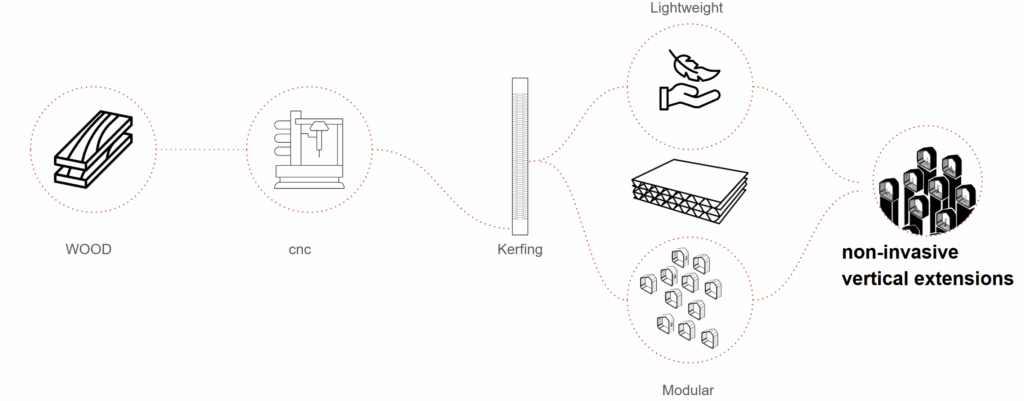
The Housing crisis
Population ranges from 2011 to 2025
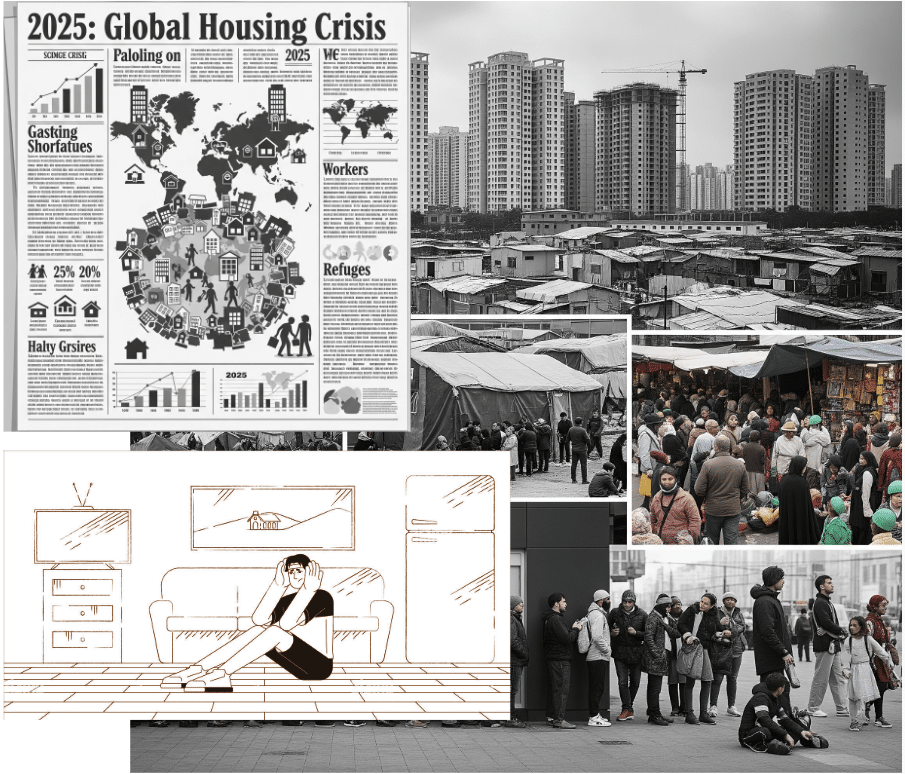
Due to rapid population growth and land scarcity, over 1.6 billion people globally live in substandard housing, with urban areas going through acute shortages. Particularly in densely populated towns like Barcelona, creative, space-efficient, and environmentally friendly housing solutions are required due to rising rents, deteriorating infrastructure, and climate pressures
Inhabitants immigrants is the reason?
Spain’s housing crisis—intensified by rising immigration, soaring prices, and stagnant construction—exacerbates urban inequality and underscores the urgent need for inclusive, sustainable housing strategies to support long-term social and economic stability.
Demography Map
Data from 2001 to 2011
Between 2001 and 2011, Spain experienced a significant demographic shift, with a sharp increase in immigration contributing to rapid urban population growth. This surge, combined with limited housing construction, placed intense pressure on existing urban infrastructure and exacerbated the affordability crisis.
This period saw Spain’s foreign-born population rise by over 100%, contributing to a rapid increase in urban population growth, particularly in cities like Barcelona and Madrid. However, housing construction failed to keep pace with this surge in demand, due to restrictive urban planning policies, financial crises, and the slow adaptation of the housing market. As a result, existing infrastructure became overwhelmed, and the affordability of housing for both immigrants and local residents sharply declined. This exacerbated social inequalities, leading to increased gentrification, rising rental prices, and a growing shortage of affordable housing, which continues to affect Spain’s urban centers today.”
Barcelona
Data from 2001 to 2011
Following the 1992 Olympic Games, Barcelona underwent rapid urban transformation, attracting global tourism and international investment. Over time, this influx contributed to a rise in long-term foreign residents, intensifying housing demand and further straining the city’s limited residential stock.
While this influx boosted the economy, it also led to the commodification of housing, driving up rents, displacing long-time residents, and placing increasing strain on Barcelona’s already limited and aging residential stock.”
Housing demand timeline
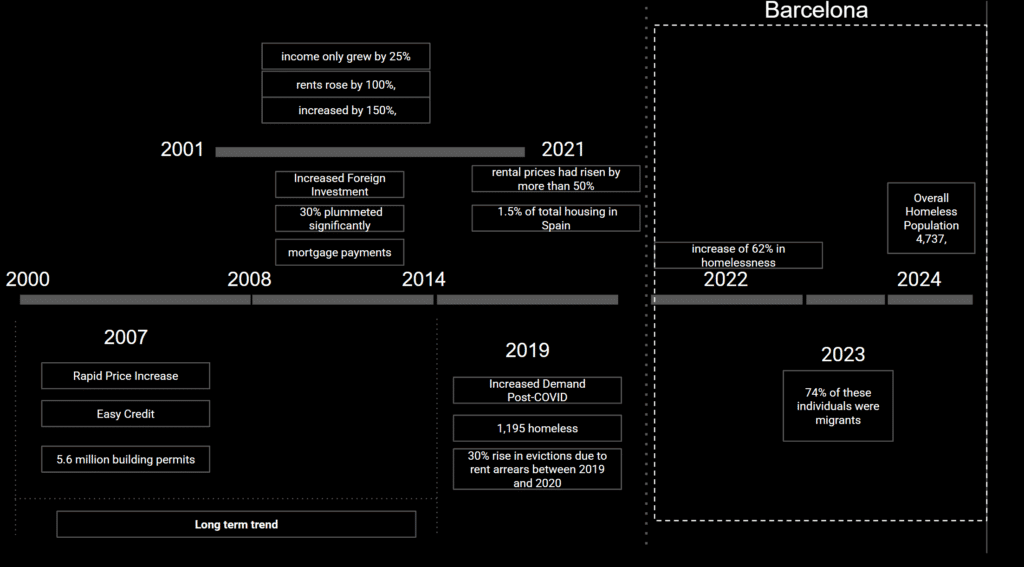
SPAIN Existing policies AFFORDABLE HOUSING by 2035
Why Can’t we build over the Existing building?

“The lack of land for construction is a serious problem in the large cities and resort areas in Spain. According to Idealista, the government got interested in the idea of the Danish architect Sigurd Larsen as a possible solution of the problem. His idea is to build wooden units using a modular system installed on the rooftop of already existing apartment buildings. According to the author of the project, that housing will be an affordable option for single occupants and couples. Thanks to the modular system, occupants will be able to add more bedrooms and bathrooms if needed in the future.”

Reference links : Houses on the roofs as the solution of the lack of construction land problem
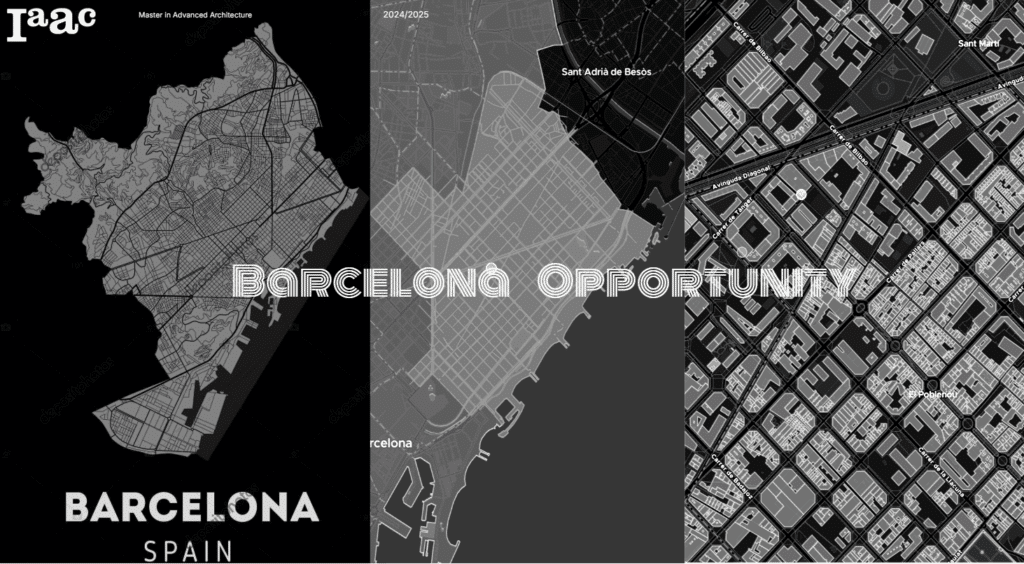
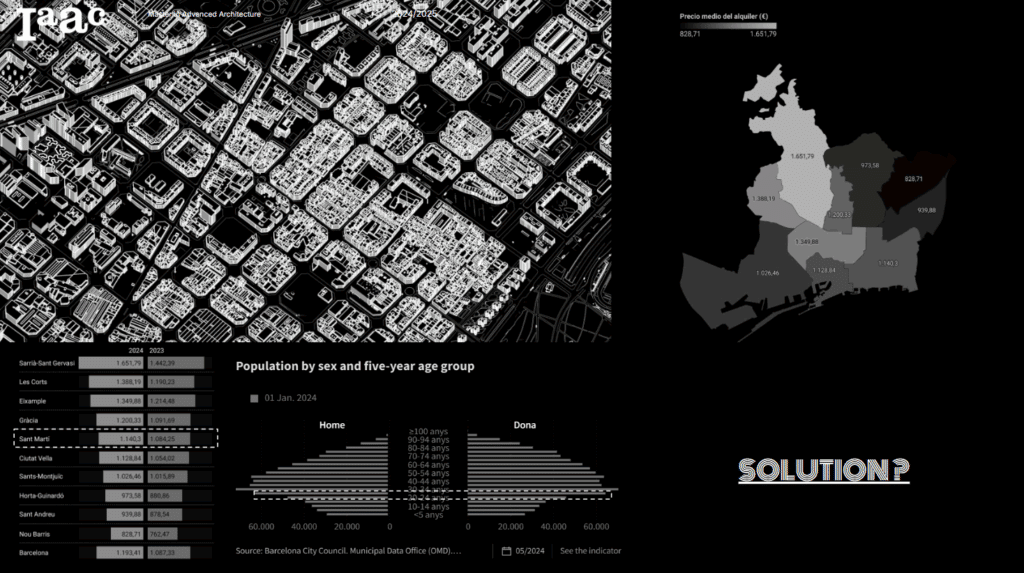
What’s the Solution?
Optoppen,A city has an enormous potential for Optoppen.
Optoppen is a Dutch term that refers to the architectural and urban strategy of adding one or more floors on top of existing buildings to increase urban density without expanding the building footprint. This technique is gaining momentum in European cities, especially where land is limited and housing demand is rising.
Optoppen Web based -Tool
The Optoppen tool assists in evaluating the vertical extension potential of existing buildings by identifying how many additional floors can be added, based on structural capacity, zoning regulations, and urban planning constraints.
Aim
This project emphasizes minimal connections, lightweight structures, and error-less assembly to enable sustainable rooftop extensions. By combining modular prefabrication, digital twin simulations, and precise CNC joinery, it delivers scalable, low-impact solutions for urban densification—ensuring fast, clean installation with minimal disruption to existing buildings.
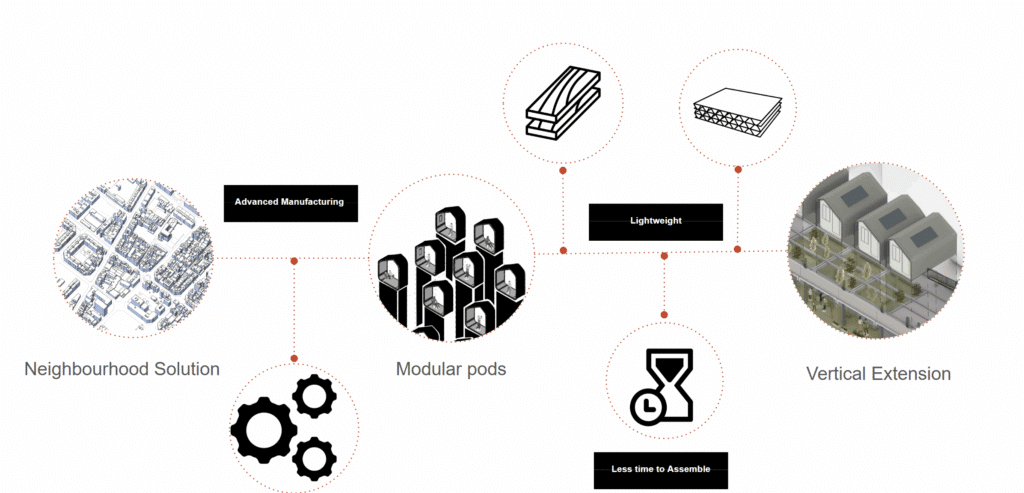
State of the Art
Wikkel house
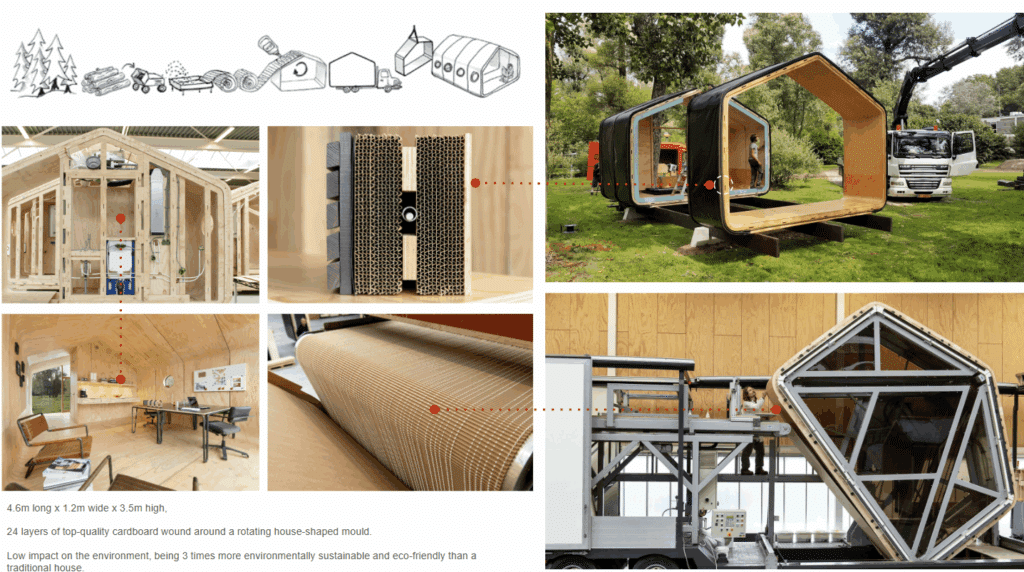
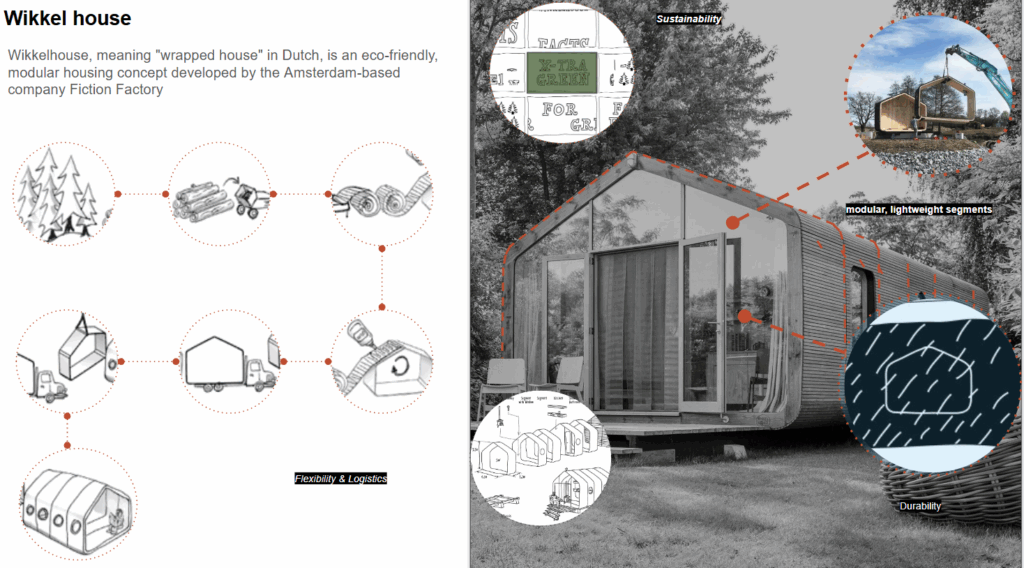
Essential Homes
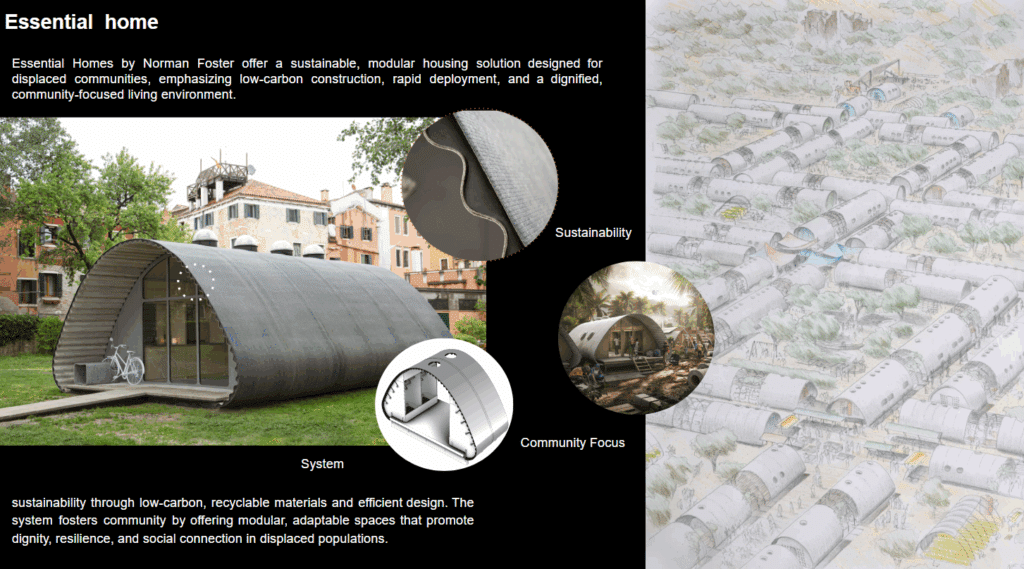
sustainability through low-carbon, recyclable materials and efficient design. The system fosters community by offering modular, adaptable spaces that promote dignity, resilience, and social connection in displaced populations.
70 % less than that of conventional residential buildings.
cement mixture with 20 % less CO2 was used for the outer shell rollable concrete slabs
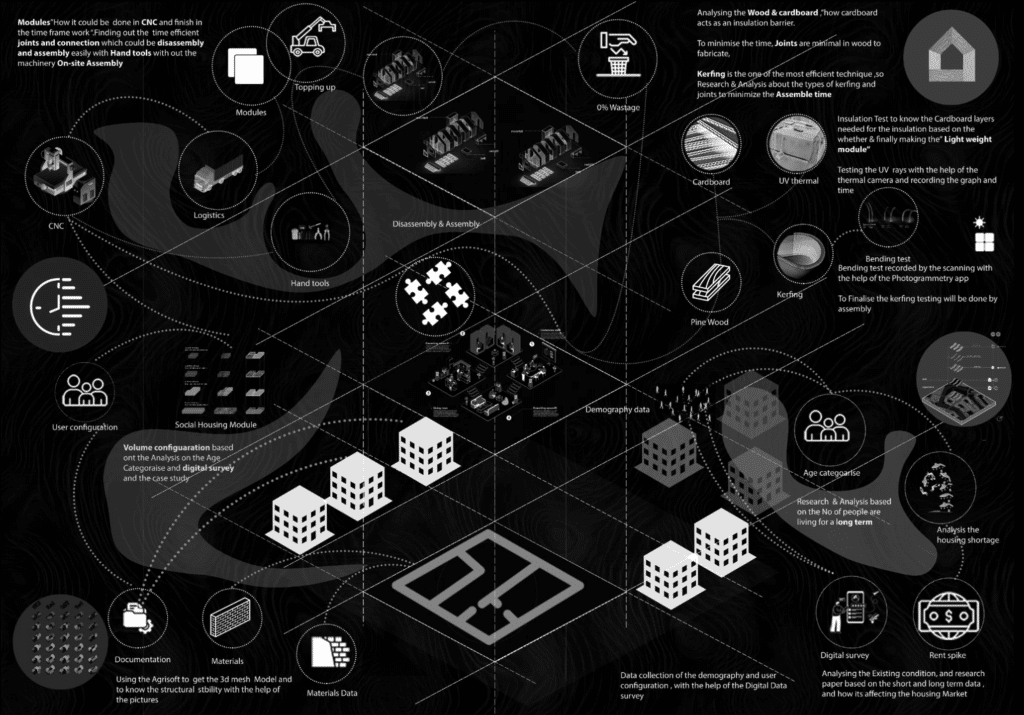
Workflow Diagram
The core workflow of this research focuses on the advanced manufacturing of lightweight structural modules through digital fabrication techniques, aiming to reduce material usage while ensuring strength and adaptability. The process involves iterative design testing, bending behavior analysis of kerfed and composite panels, and structural validation through physical prototyping and digital assessment. These modules are developed specifically for vertical rooftop extensions, with the goal of topping up existing buildings in dense urban environments in a reversible, low-impact, and sustainable manner.”
Existing building typology
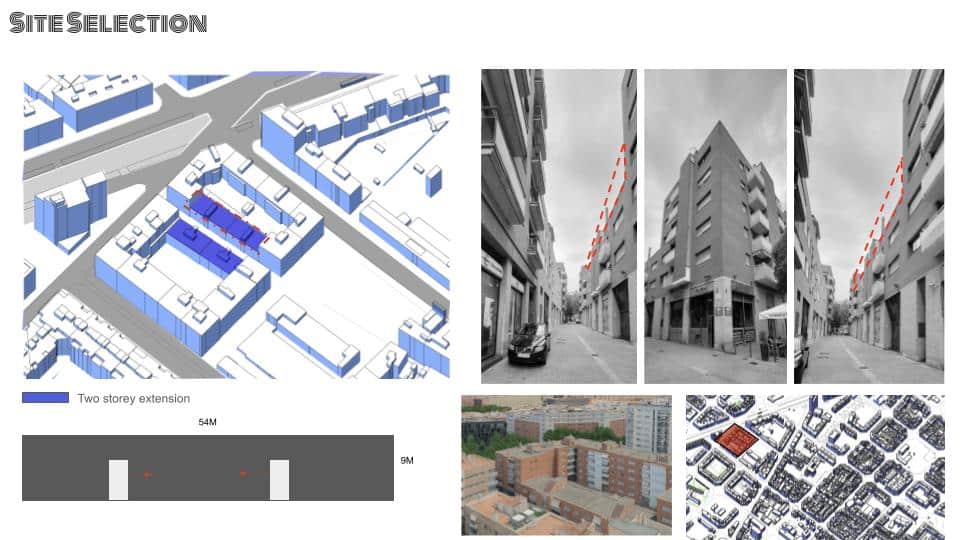
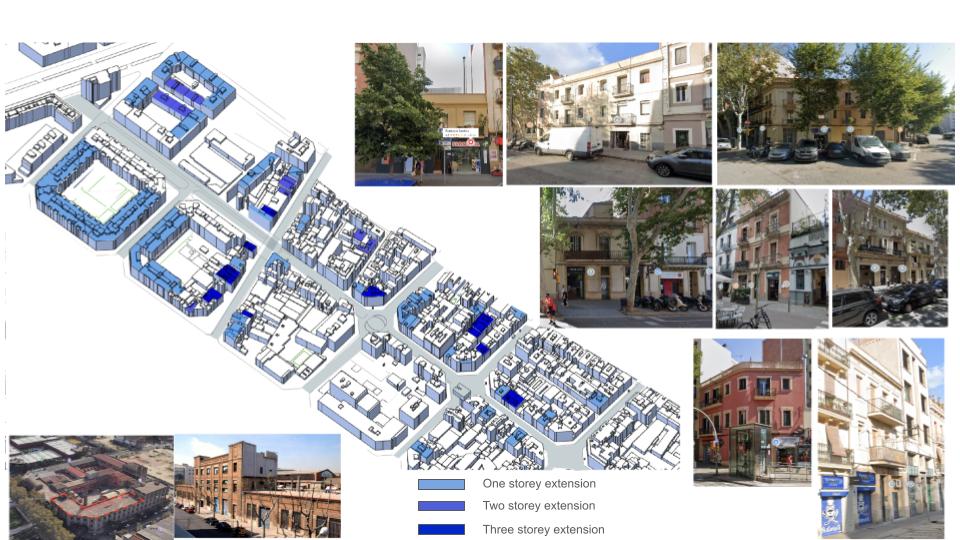
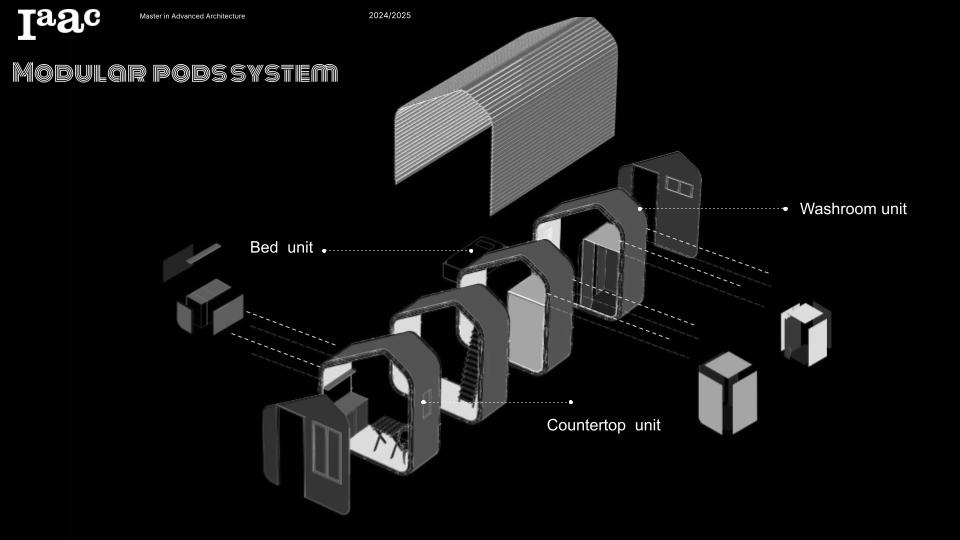
The modular pods are designed as independent, prefabricated units—such as washroom modules, sleeping units, and countertop elements—allowing for rapid production, transport, and on-site assembly. This system supports flexibility, easy replacement, and scalability, making it ideal for rooftop extensions in dense urban environments with minimal disruption to existing structures.”
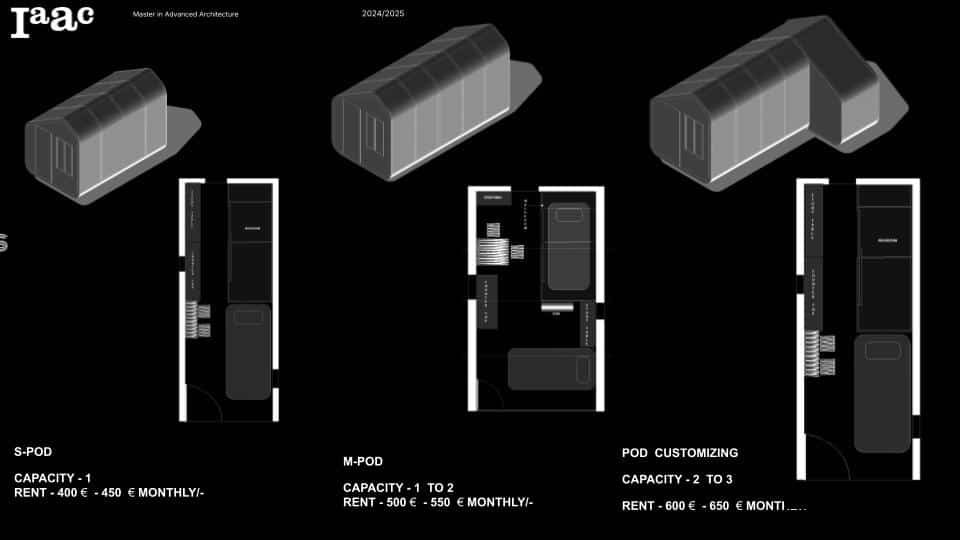
“The modular pods are available in three types, each differentiated by volume and occupancy capacity. Designed to accommodate varying user needs, their pricing structure reflects these differences—larger units for multiple occupants cost more, while compact versions remain affordable, offering scalable solutions for diverse housing demands and rooftop conditions.”
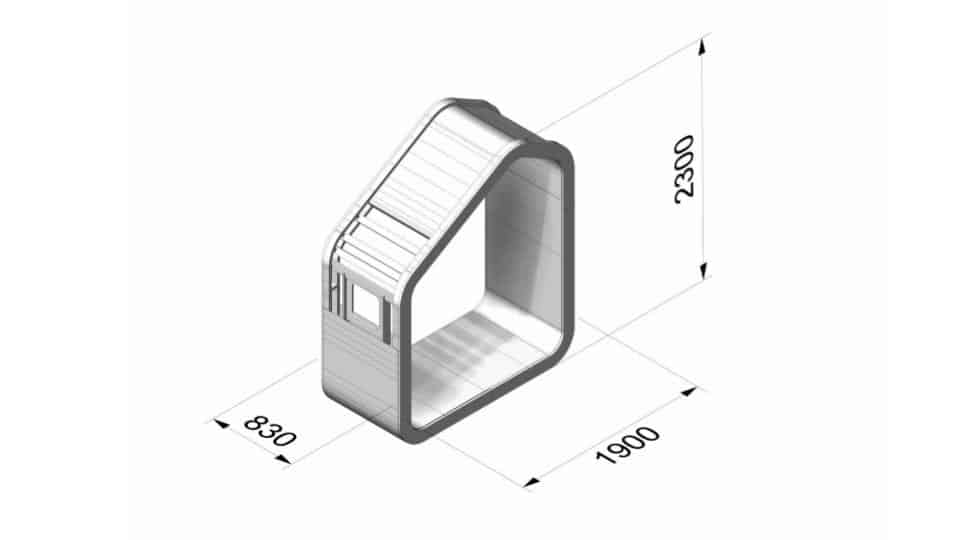
Each modular pod measures 830 mm in depth, 1900 mm in width, and 2300 mm in height, offering a compact yet functional volume suitable for rooftop installation, efficient transport, and ergonomic interior layout within limited urban space.”
Beam frame detail in Exploded
Manufacturing workflow
Bending Test & Validation
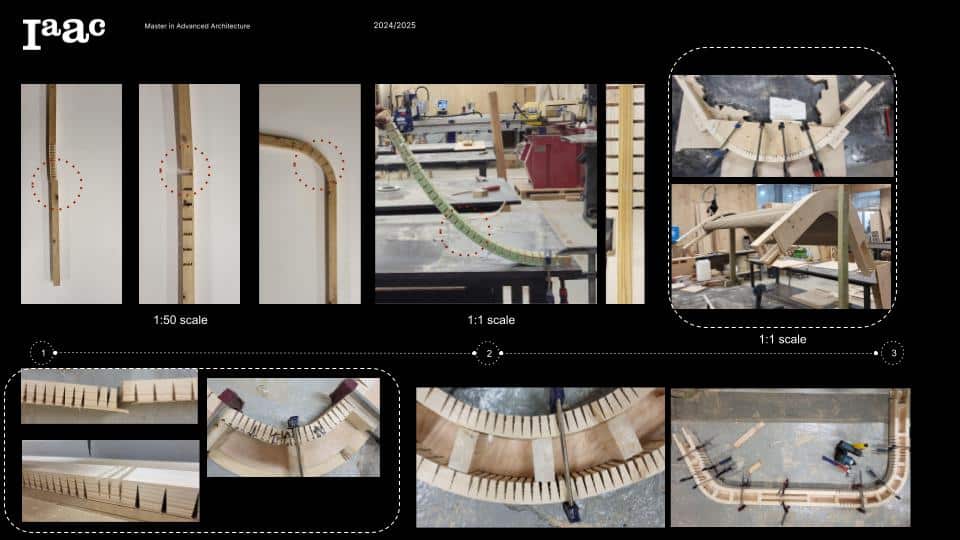
Fabrication
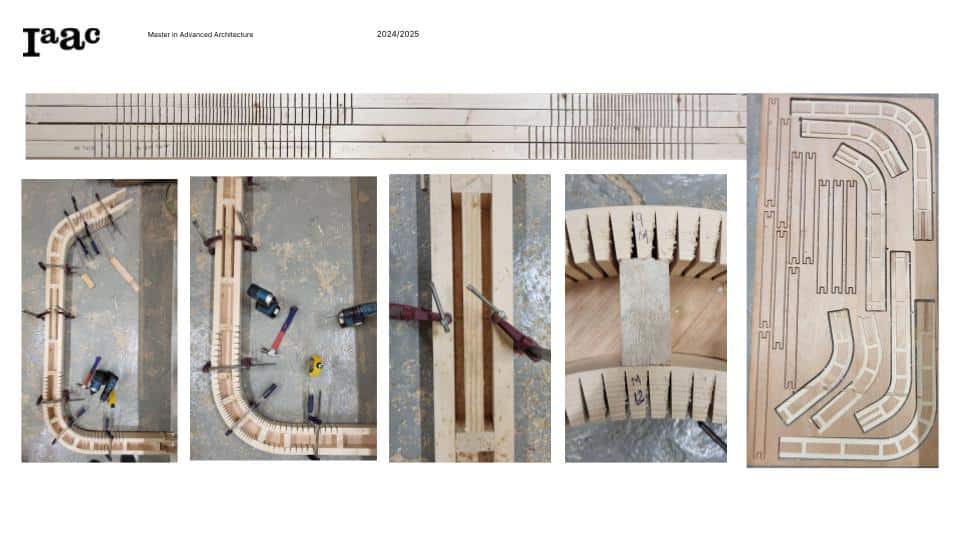
Insulation layers
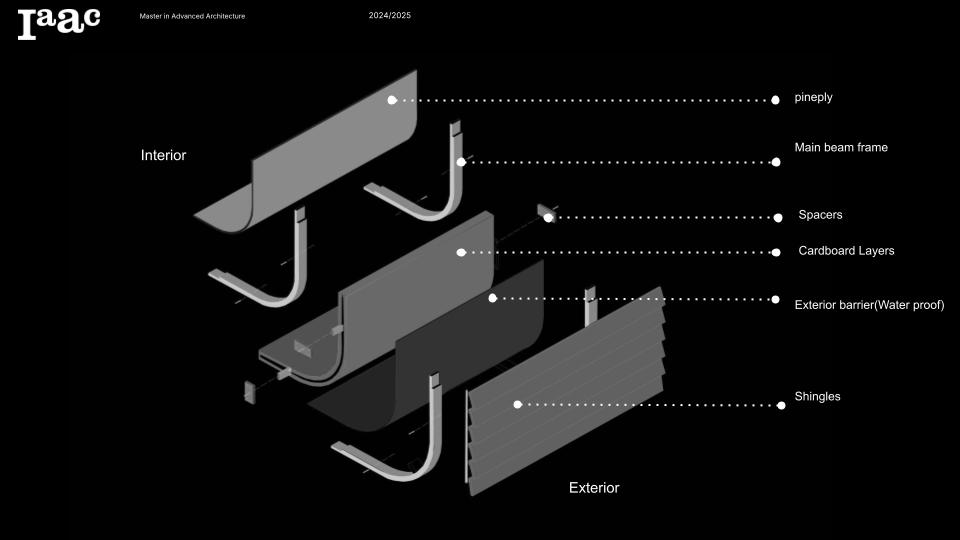
Modular pods Assembly
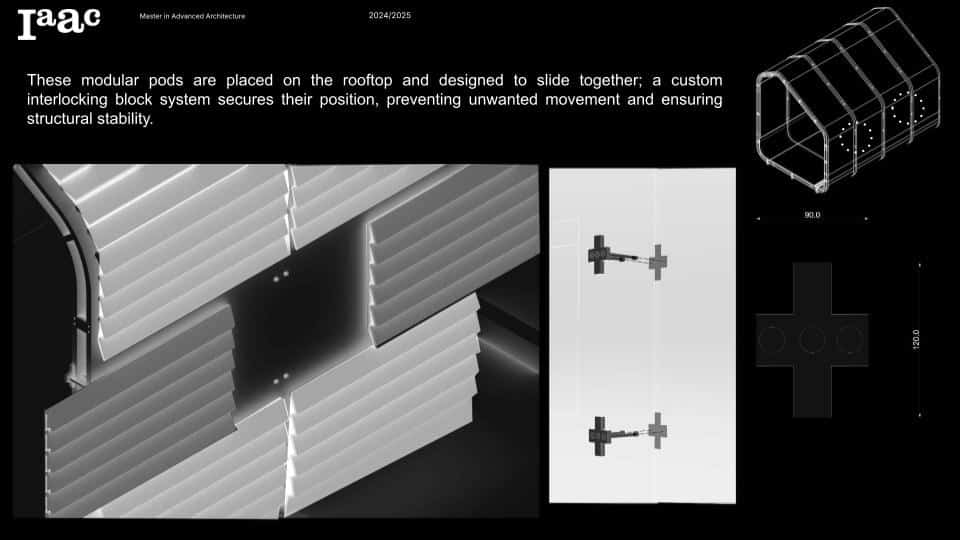
Modular pods: Function layouts
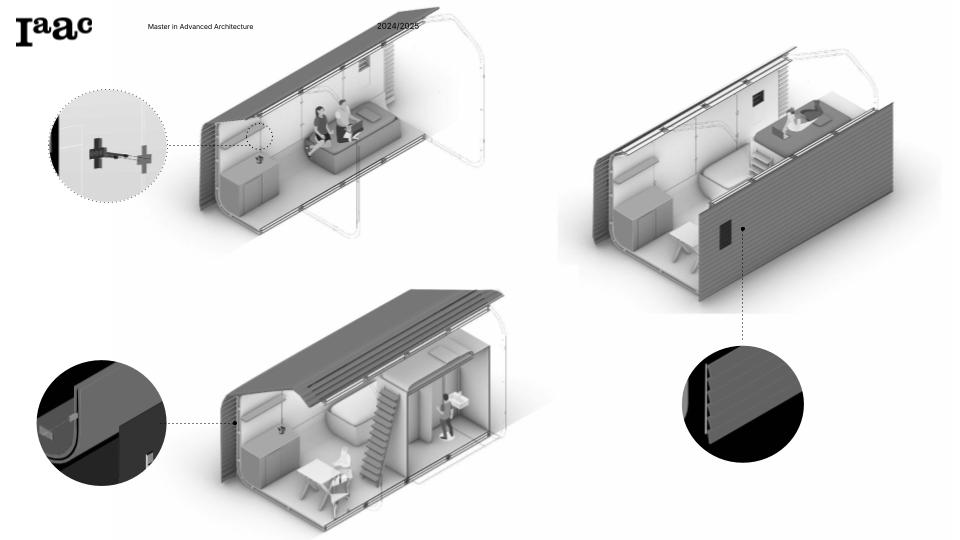
Case study Building Functional layout
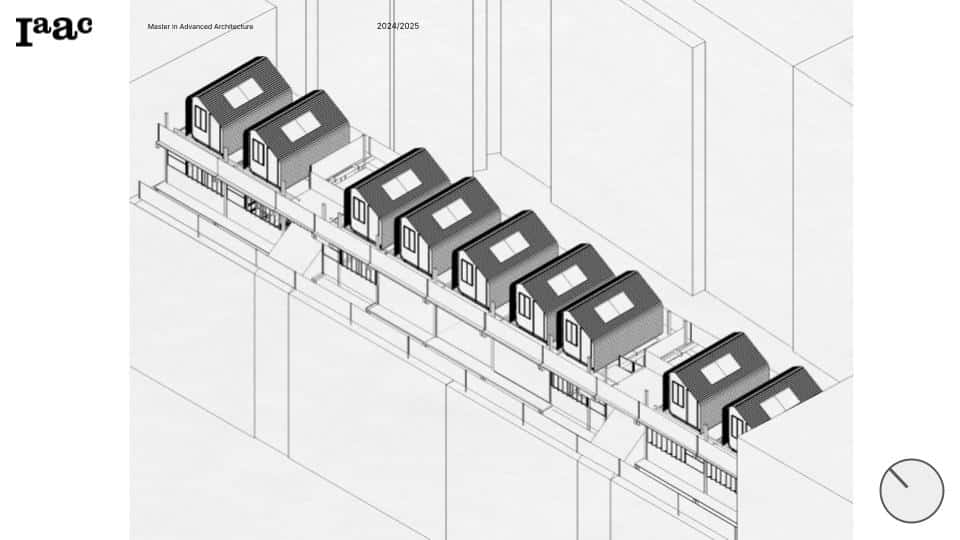
Functional layout of proposed common spaces
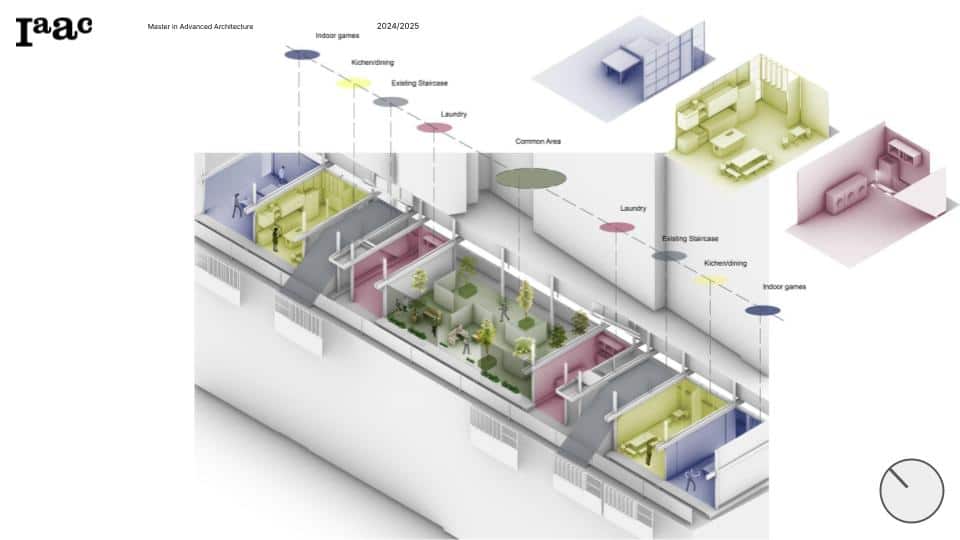
Applications
The modular pods are designed for flexible deployment in diverse settings—including urban rooftops, outdoor terraces, hillside terrains, and remote cabin environments—making them suitable for both permanent and temporary use across a wide range of architectural and geographic contexts
